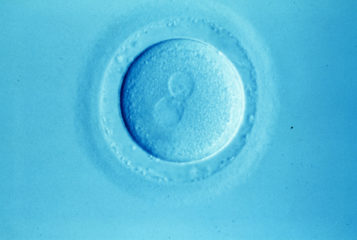Telling and Talking about Donor Conception with People Aged 17 and Over - A Guide for Parents
Published by the Donor Conception Network and available on its website here
Olivia Montuschi's revised 'Telling and Talking' booklet aims to guide parents of donor conceived (DC) children aged 17 or over through the delicate process of disclosure.
I myself had children through donor conception in the late 1990s. Telling my own children was an imperative from the moment they were in the cradle, but I was fortunate to be connected to other DC families and this offered instant confidence and reassurance through the process. A few years earlier, though, DC families experienced a different journey.
It should come as no surprise that, pre-1991, with sperm donation well-established and egg donation still in its early stages, recipients were firmly advised to 'forget' that the treatment had happened and told that the children should never be informed. This well-intentioned advice was often profoundly unhelpful to the families concerned, in some cases creating the conditions for a lifetime of guilt. The burden of secrecy, often shouldered against personal inclination, has been carried well into old age by many and in one case into widowhood.
This silence is often seen through the prism of hindsight but it is worth reasserting that, quite apart from the isolating experience of infertility or the trauma of losing children through genetically transmitted conditions, there were no support groups and no wider conversations to equip families with the confidence to engage in telling a child about his or her donor origins. It is distressing to think that these important conversations would have to take place against a backdrop of adolescent angst, or later-life family illnesses and bereavements.
The author, who along with her husband Walter Merricks is a founder member of the Donor Conception Network, brings her professional and personal experiences into this book, examining the complex individual circumstances that have eventually compelled parents to reveal the donor origins of their adult children.
Olivia does not downplay the amount of work required for that difficult conversation. She proposes a clear strategy that aims to put the grown-up child at the centre of the process, with parents being advised to put their own feelings aside. She emphasises the importance of preparing for disclosure and establishing, in advance, a support network that is immediately accessible. While acknowledging the generally positive outcomes in these difficult conversations, she advises that the conversation itself should not be seen as a culmination of effort, rather the beginning of a path where the child or children will require space to ask questions and perhaps re-negotiate what they had held to be their 'reality'.
The ramifications of disclosure, such as the potential discovery of half-siblings, are also discussed, as is the possibility that a DC child might search for biological relatives. Throughout the book, Olivia is firmly reassuring, a stance borne no doubt of the extensive work she has done with many DC families; this is a distinct advantage in an area where self-doubt and fear could take hold, as the voices within the case studies testify.
The overall tone is encouraging and optimistic and will equip anyone who picks up this book with the intention of 'telling' with useful advice, offering genuinely practical steps as well as insights into generously shared personal experiences from the case studies and the author herself.





Leave a Reply
You must be logged in to post a comment.